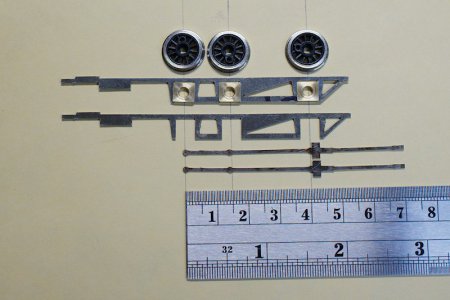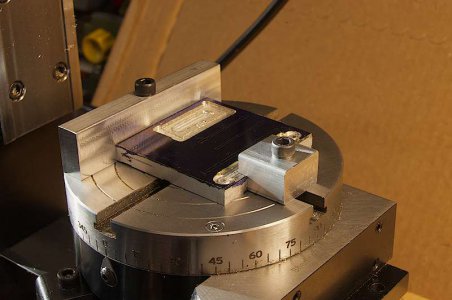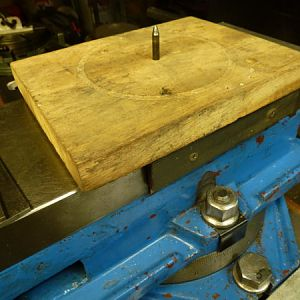+1 on the online-submit laser cut service. I used OSHCut to make HO scale steam locomotive parts, CAD-ed .dxf files with LibreCAD, submitted online, and had the parts in about a week and a half. Here's a pic:

side and connecting rods, frame sides are between the ruler and the wheels. 0.02" nickel-silver material, you can see sharpie marking on the parts but that can be easily cleaned off. On one of the frame sides you can see brass-milled hornblock bearings inserted, their vendor specified a 1/4" width for the accepting slot, I drew the slots to exactly that width in the CAD drawing and they slid in nicely after a bit of cleanup filing. Note the siderod bearings do not line up with the driver center lines, that was my noob error - pays to double check your drawings before submitting.
Long story omitted, I'm now milling these parts myself, not because of any shortcoming in the laser-cut service option. I'm doing the glue attachment thing to sacrificial aluminum, started with 3M 77 spray adhesive but that doesn't hold the part well as you cut away support, so super-glue would be in order. That said, my particular parts have bearing holes drilled prior to milling, and those can be used with screws to hold the part for the milling, so, think through your order of operations. I also made some task-specific tooling to assist, a couple of pre-sized clamps and a fence that has a shallow key cut in the bottom to square-up to the T-slot, to assist working with a rotary table to cut radii. Here's a shot of the setup:

The one clamp does push up the other side a bit, so a second clamp or a finger clamp into the central region of the part is in order. I originally tried mounting the vise on top of the rotary table, but that makes re-centering the table on the spindle tough. With this setup I can slide the part along the fence from bearing to bearing, remove the part for rotary table centering and put it back on the same Y axis without any fuss. That screw on top the fence is a little too tall to lower the Sherline spindle down to the table for centering, YMMV.
Anyway, with all the hoo-hah required for milling, laser cutting service is a way more expedient operation, just make sure your drawing is correct. Still, I'm going to perfect this milling thing even if it drives me to the memory-care home....




